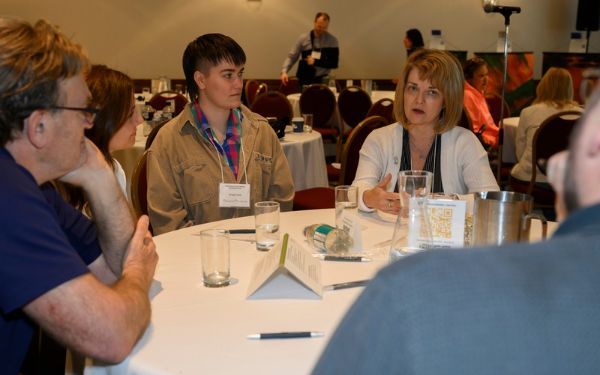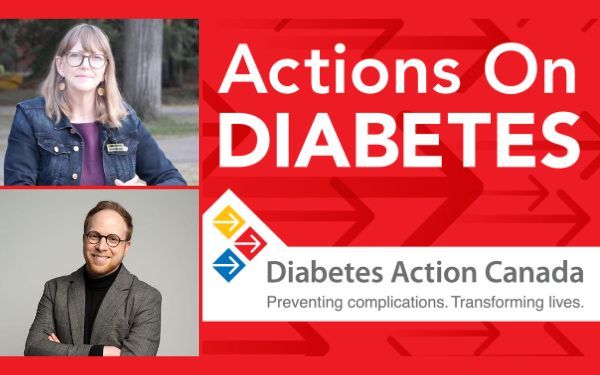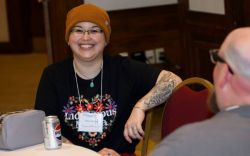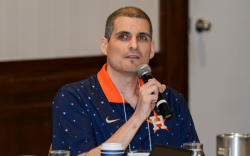Finding Belonging Through Art and Patient Partnership: My Journey at the DAC 2024 Workshop

Posted date: July 12, 2024 |
By Shayla Hele
This is the third in our series of blog posts, written by Patient Partners, about their experience at the Diabetes Action Canada Workshop.
About Shayla: My name is Shayla Hele. I am 26 years old and have been living with Type 1 Diabetes for 19 years. I have been a part of the Collective Patient Circle at Diabetes Action Canada since 2016. I currently live in Halifax, Nova Scotia, and I love dirty chai lattes.
I have been attending the Diabetes Action Canada (DAC) conferences since the first conference in 2017. It is almost intangible how far we have come since then, with substantial progress being made every year. For myself, what made this conference a particular success was the incorporation of research using art and creativity as a means of conveying qualitative data. The Reshape T1D Collection, the film Low, and the Home Sweet Home(less) photo exhibit were individually and collectively phenomenal. I have never felt so engaged at a DAC conference as I did with each of these pieces. I believe this is in large part a result of the direct involvement of individuals living with diabetes in the development and implementation of these projects.
I am not a researcher, bear in mind, but from my understanding and experience, the consequences of research often go unseen or take years to create meaningful change. These projects, in contrast, felt as though they held direct impact. Perhaps they cannot amplify the rate of change in policy, but from how they made me feel, I am hopeful they will. I believe that art offers a vulnerability and personability that speaks louder than numbers and conclusions. When there is something more tangible than a piece of paper driving actions, I believe we may see different outcomes. I believe this also holds true in terms of knowledge mobilization, which is something I know DAC has been working to amplify since its outset.
All this is to say, I felt profoundly moved and motivated by this conference. In previous years, I have found it difficult to hold my attention while researchers presented their projects, discussing protocols or outcomes I did not understand, could not see the implications of, or could not directly relate to. This deterred me from meaningfully engaging with poster presentations and researchers one-on-one because I felt I did not know how. This year felt different, and it was refreshing. It felt as though in every project being presented, both qualitative and quantitative, I could see myself (or someone else with lived experience) shining through. This created space for me to connect with each project; the outcomes, the patient partners, and the researchers; and it felt empowering and exciting.
I am very proud to be a part of this organization and to have had the opportunity to watch it grow into something so powerful. I am thankful to have been given the opportunity to use my voice and be heard. I am also very grateful to all the other folks with lived and loved experience for sharing their expertise. I also thank all the folks at DAC who have worked and who continue to work tirelessly towards our shared goals.
Featured in Article
Shayla Hele
Associated Programs

Innovations in Type 1 Diabetes
Related Podcasts

Reshaping How we Research Type 1 Diabetes
On this episode of Actions on Diabetes, host Krista Lamb will be chatting with two guests who are looking at ways to improve the coordination of care for people living with type 1 diabetes. The Reshape T1D project tries to understand how people interact with the health care system by involving those living with T1D and their clinicians in designing the research process.
Our guests are Jamie Boisvenue, a PhD student at the Alberta Diabetes Institute and the University of Alberta, and Patient Partner Kathleen Gibson. They are hoping to highlight have lived experience to help clinicians provide better patient-forward care.

Patients as Research Partners
Episode one features an interview with Patient Partner Dana Greenberg and Dr. Holly Witteman about the role of patients as Research Partners.


